UNIT 7: MATURE LYMPHOID NEOPLASMS & PLASMA CELL NEOPLASMS
1/63
There's no tags or description
Looks like no tags are added yet.
Name | Mastery | Learn | Test | Matching | Spaced |
|---|
No study sessions yet.
64 Terms
Leukemia
Primary site is the blood or bone marrow
Lymphoma
Localization of disease in the lymph nodes and spleen.
Lymphadenopathy is present in approx 40% of cases
Leukemic phase
Phase of lymphona in which the malignant cells are found in the peripheral blood
Plasma cell neoplasm/ Plasma cell myeloma
Increased number of plasma cells, bone marrow-based
Chronic Lymphocytic Leukemia
Small Lymphocytic Lymphoma
Leukocytosis with increased number of mature lymphocytes - B cells
Most patients are asymptomatic
Indolent, slow-growing B-cell neoplasm
Male > Female
Chronic Lymphocytic Leukemia
Small Lymphocytic Lymphoma
Composed of mature small B lymphocytes
Chronic Lymphocytic Leukemia
Small Lymphocytic Lymphoma
Disease is often detected by an abnormality in routine CBC
Confirmed by flow cytometry immunophenotyping
Chronic Lymphocytic Leukemia
Used for non leukemic patients with the tissue morphology and immunophenotype of CL
Small Lymphocytic Leukemia
Lymphoma phase of CLL
Small Lymphocytic Leukemia
Most common form of leukemia in older adults
The median age of onset 65-72 years old
Absolute lymphocytosis
Common initial finding for CLL
Lymphadenopathy
common initial finding for SLL
Diagnosis of CLL
> or = to 5×109/L circulating B lymphocytes for 3 months
SLL in nodal form
Blood lymphocyte count may be <5 × 109/L
80-90% small lymphocytes (overmature (well differentiated) with hypercondensed nuclear chromatin
Describe its PBS
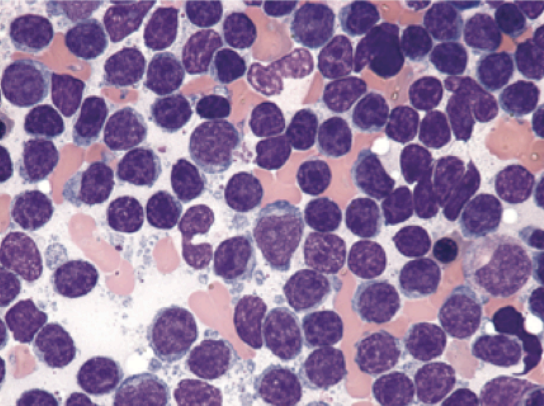
Chronic Lymphocytic Leukemia
Small Lymphocytic Lymphoma

homogenous, small, hyperclumped lymphocytes
Describe its lymphocytes
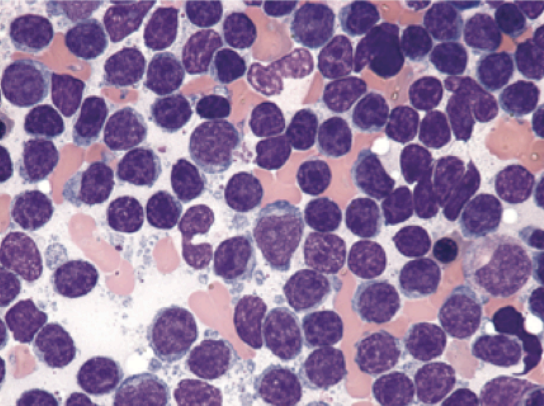
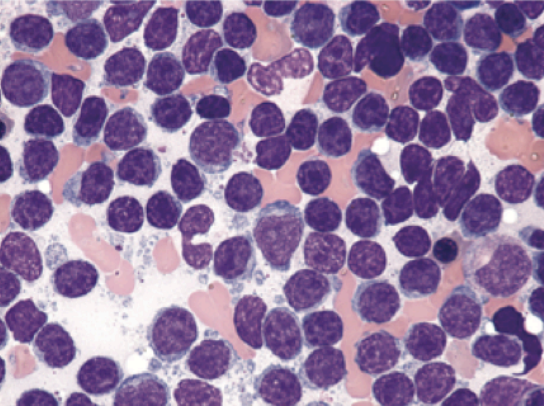
Chronic Lymphocytic Leukemia
Small Lymphocytic Lymphoma
Scant cytoplasma and dense nucleus with condensed chromatin without a defined nucleolus
High N:C ratio
Cobbleston or soccer ball
Chromatin pattern
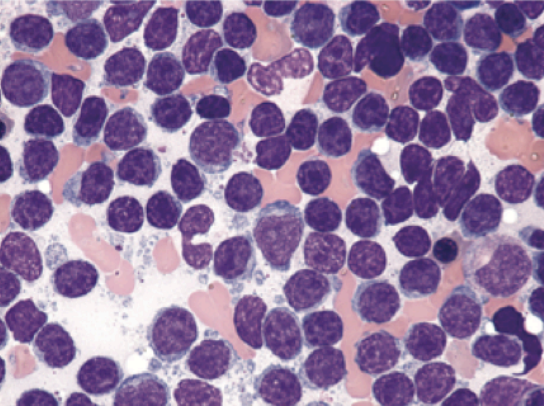
Smudge Cells/ Basket Cell
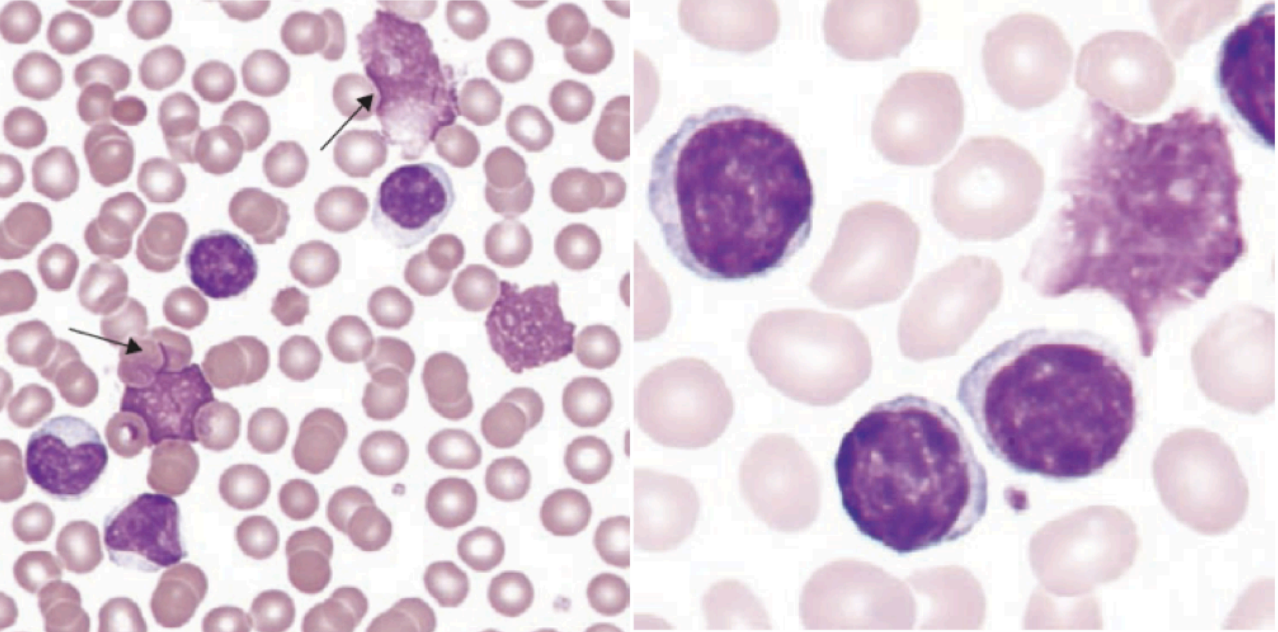
Smudge cells/ Basket cell
Remnant of cells that lack any identifiable cytoplasmic membrane or nuclear structure
Smudge cells/ Basket cell
Increased amount because associated with abnormally fragile lymphocytes
Atypical CLL
Associated wiht biologic markers indicating more aggressive disease
CLL/PLL
Mixed type/ Atypical CLL
Two Variant subtypes of Atypical CLL
CLL/PLL
What Atypical CLL variant subtype has:
>10% but <55% prolymphocytes
Mixed type/ Atypical CLL
What Atypical CLL variant subtype has:
>15% large atypucal lymphoid cells that exhbit nuclear indentation/ clefts
CD19, CD20, CD23
B cell markers of Atypical CLL
Atypical CLL
Co-express the T cell antigen CD5
Atypical CLL
Weak surface Ig and dim CD20 expression
Atypical CLL
Cyclin D1 and Tdt negative, CD200+ LEF1+
Atypical CLL
CD19+, CD20+, CD 23+, CD5+, weak surface Ig, CD10-, FMC7-
CD10 (CALLA)
Common/intermediate in B cell ALL
Catovsky-matutes scoring for CLL
weak expression of surface immunoglobulin
expression of CD5
expression of CD23
No expression of FMC7
Absent or weak expression of CD79b or CD22
Rai and BInet staging systems
Staging for Chronic Lymphocytic Leukemia
Low Risk
RAI classificiation (revised):
Lymphocytosis >5×109/L
Intermediate Risk
RAI classificiation (revised):
Lymphocytosis >5×109/L and (lymphadenopathy + splenomegaly) or hepatomegaly or both
High Risk
RAI classificiation (revised):
Lymphocytosis >5×109/L and hemoglobin <11g/dL
Stage A
Binet Classification
Hemoglobin ≥ 10g/dL and platelets ≥ 100×109/L and < 3 enlarged nodal areas
Stage B
Binet Classification
Hemoglobin ≥ 10g/dL and platelets ≥ 100×109/L and ≥ 3 enlarged nodal areas
Stage C
Binet Classification
Hemoglobin <10 g/dL or platelets < 100×109/L and any number of enlarged nodal areas
Atypical CLL
Del(13q14)
Deletion of 13q
the most ocmmon cytogenetic abnormality in CLL
Del(13q14)
Loss of a segment on the long arm of chromosome 13 that contains tumor suppressor elements
Del(13q14)
Confers a favorable prognosis, associated with the most indolent disease course
Del (17p) and TP23 abnormalites
Worst prognostic indicators
<10% of patients
Deletion of tumor suppressor genes
Del (17p) and TP23 abnormalites
P53-mediated apoptosis is impaired
Del (17p) and TP23 abnormalites
Most ominous cytogenetic findings, confer high-risk disease
Unmutated/ less mature form
More aggressive clinical course of mutation of the heavy chain immunoglobulin genes
Mutated/ more mature
Do better with standard chemoimmunotheraphy mutation of the heavy chain immunoglobulin genes
Rituximab
Obinutuzumab
Treatment for Atypical CLL
Rituximab
Anti-CD20 monoclonal antibody
Obinutuzumab
New monoclonal antibody and designed to more efficacious